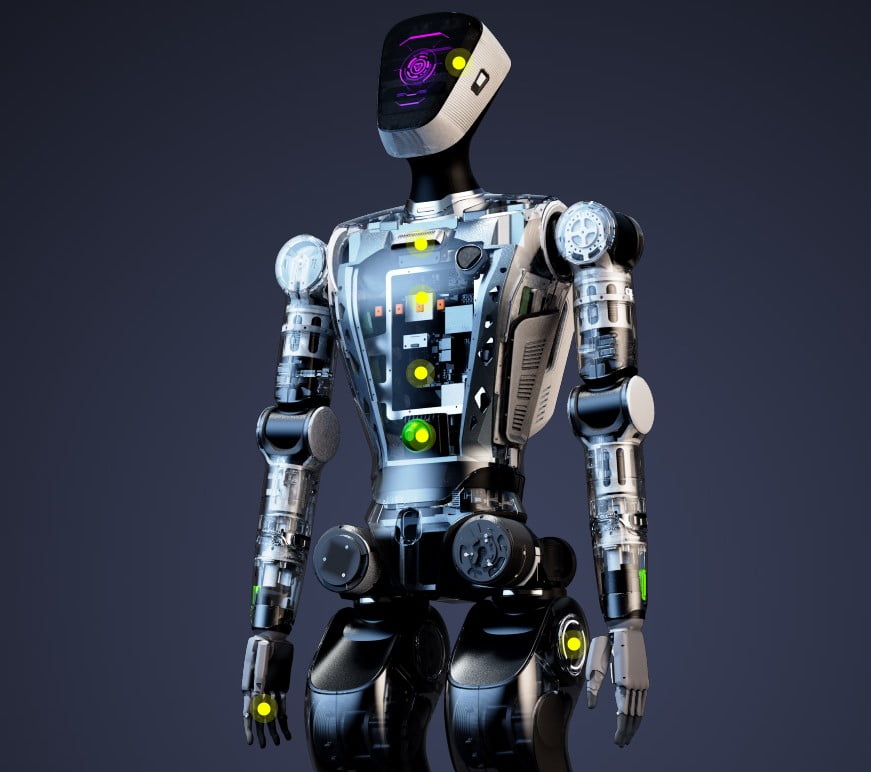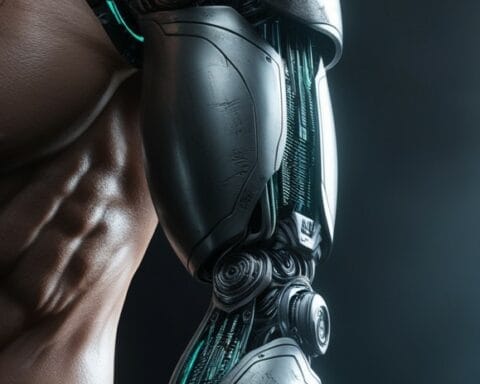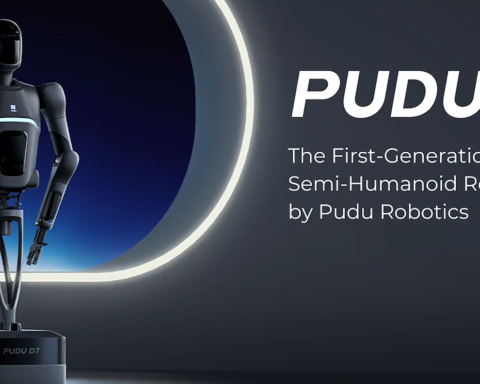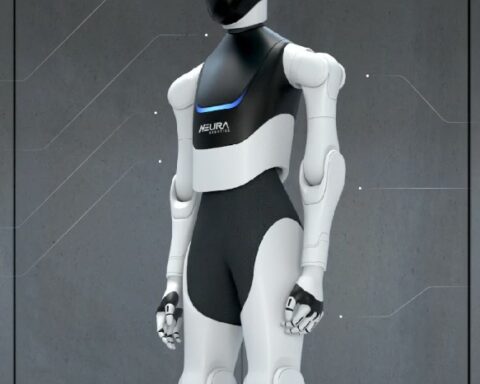Last Updated on August 21, 2024 8:31 am by Laszlo Szabo / NowadAIs | Published on August 21, 2024 by Laszlo Szabo / NowadAIs
Agibot’s High-Stakes Bet: Can Their Humanoid AI Robots Outsmart Tesla? – Key Notes
- Agibot unveils a lineup of five humanoid robots tailored for various industrial and domestic tasks.
- The flagship Yuanzheng A2 excels in precision tasks, demonstrating high levels of dexterity.
- Lingxi X1 is an open-source robot aimed at fostering global innovation in robotics.
- Agibot’s rapid rise in the robotics industry is bolstered by significant funding and strategic partnerships.
Agibot’s Diverse Humanoid Lineup
Shanghai-based startup Agibot has unveiled a comprehensive lineup of cutting-edge humanoid robots, igniting a fierce rivalry of Tesla, Figure or Unitree in the global robotics race.
Agibot’s unveiling event showcased an impressive array of five distinct humanoid robot models, each meticulously designed to cater to specific applications and scenarios. This diverse range of robots underscores the company’s commitment to pushing the boundaries of embodied intelligence and meeting the ever-growing demands of various industries.
The Flagship: Yuanzheng A2
At the forefront of Agibot’s lineup stands the formidable Yuanzheng A2, a towering biped humanoid robot measuring an impressive 5’9″ (175 cm) and weighing in at a substantial 121 lbs (55 kg). This flagship model boasts an array of advanced sensors and amazing artificial intelligence capabilities, enabling it to perceive, process, and respond to visual, auditory, and textual information with remarkable precision.
One of the standout features of the Yuanzheng A2 is its exceptional dexterity, demonstrated by its ability to perform intricate tasks such as threading a needle with surgical precision. This level of finesse sets it apart from many of its competitors, making it an attractive choice for industries that demand meticulous attention to detail.
Versatile Companions: A2-W, A2 Max, X1, and X1-W

Complementing the Yuanzheng A2 is a quartet of equally impressive humanoid robots, each tailored to specific applications and scenarios. The A2-W and A2 Max models are designed for flexible manufacturing and heavy-duty industrial tasks, respectively, while the X1 and X1-W robots cater to the realms of research, education, and specialized data acquisition.
This diverse range of models underscores Agibot’s commitment to providing comprehensive solutions that can seamlessly integrate into various sectors, from manufacturing and logistics to interactive services and household assistance.
Open-Source Approach: Lingxi X1
One of the standout offerings from Agibot is the Lingxi X1, an open-source humanoid robot that represents the company’s dedication to fostering innovation and collaboration within the robotics community. By making the design schematics, software frameworks, middleware source code, and basic operational algorithms freely available, Agibot aims to empower developers and enthusiasts worldwide to contribute to the advancement of humanoid robotics.
This open-source approach not only fosters a spirit of collaboration but also has the potential to accelerate the pace of innovation by leveraging the collective knowledge and expertise of the global robotics community.
Embodied Intelligence Roadmap and AIDEA System
Agibot’s vision for the future extends beyond its current lineup of robots. During the unveiling event, the company presented its ambitious roadmap for embodied intelligence, dubbed G1-G5, outlining its long-term goals and strategic initiatives.
Additionally, Agibot introduced the AIDEA embodied intelligence data system, a comprehensive platform designed to facilitate the development and deployment of embodied AI systems. This system showcases the company’s commitment to pushing the boundaries of robotics and AI, leveraging cutting-edge technologies to create intelligent machines that can seamlessly integrate into various aspects of daily life and business operations.
Challenging Tesla’s Optimus: The Robotics Rivalry Intensifies
Agibot’s bold move into the humanoid robotics arena has not gone unnoticed, particularly in the context of its burgeoning rivalry with industry giant Tesla. Elon Musk’s Tesla has long been a dominant force in the robotics and AI sectors, with its highly anticipated Optimus humanoid robot generating significant buzz and anticipation.
However, Agibot’s rapid progress and ambitious product lineup suggest that Tesla may face formidable competition from the Chinese innovator. Agibot’s founder, Peng Zhihui, a former “Genius Youth” recruit at Huawei, has expressed confidence in the company’s ability to challenge Tesla, citing Agibot’s superior commercialization and cost-control capabilities.
Rapid Progress and Funding Success
Agibot’s journey from inception to unveiling its advanced humanoid robots has been nothing short of remarkable. Established in February 2023, the startup wasted no time in making its mark, launching its first humanoid robot prototype, the RAISE A1, a mere six months later.
The company’s impressive progress and innovative approach quickly caught the attention of major investors, securing five funding rounds by December 2023. Prominent players such as Hillhouse Capital and BYD recognized the potential of Agibot’s embodied AI solutions, fueling the company’s growth and enabling it to accelerate its research and development efforts.
RAISE A1: A Versatile Household Assistant

Agibot’s inaugural humanoid robot, the RAISE A1, serves as a testament to the company’s ambition and technological prowess. Designed with 49 degrees of freedom, standing at an impressive 5’9″ (1.75 meters), and weighing a substantial 116 lbs (53 kg), the RAISE A1 boasts an array of advanced capabilities.
Initially envisioned for industrial applications such as bolt tightening, vehicle inspections, and laboratory experiments, Agibot’s vision for the RAISE A1 extends far beyond its original scope. The company envisions this versatile robot as a household companion capable of performing tasks like cooking, laundry, and even caring for the elderly, showcasing the boundless potential of embodied AI in domestic settings.
Expanding the Boundaries of Robotics
Agibot’s RAISE A1 stands out not only for its versatility but also for its exceptional performance capabilities. This advanced humanoid robot can achieve stable bipedal walking at speeds up to 4.4 mph (7 km/h), handle loads of up to 176 lbs (80 kg), and boasts sophisticated sensory and motor systems. Its modular design, incorporating an RGBD camera, LiDAR sensors, and interchangeable components, further enhances its adaptability to various scenarios.
Cleaning Companion: The AGIBOT C5
While Agibot’s humanoid robots have garnered significant attention, the company has also ventured into the realm of specialized cleaning robots. The AGIBOT C5 is a dedicated cleaning robot designed to perform a range of tasks, including sweeping, scrubbing, and dust mopping, with seamless integration.
Equipped with advanced features such as automatic charging, water filling and drainage, and self-cleaning capabilities, the C5 exemplifies Agibot’s commitment to delivering innovative solutions that cater to diverse commercial and residential needs.
Commercialization and Production Ramp-Up
As Agibot continues to make strides in the robotics industry, the company is gearing up for the commercial launch of its new humanoid robots. According to Jiang Qingsong, Agibot’s vice president of marketing services, the company’s bipedal humanoid robots are expected to enter mass production by October 2024, with an estimated monthly output of 100 units.
Agibot forecasts total shipments for 2024 to reach approximately 300 units, comprising 200 humanoid robots and 100 wheeled robots. However, the company remains optimistic that the final production numbers will exceed these projections, underscoring the growing demand for advanced robotic solutions across various industries.
Lingang Special Area: A Collaborative Ecosystem
Agibot’s journey has been bolstered by the supportive ecosystem provided by the Lingang Special Area, a designated economic zone within the Shanghai Free Trade Zone. This strategic location has offered Agibot an ideal testing ground for its robots’ interactive service capabilities, fostering a collaborative environment that has facilitated the company’s rapid growth and development.
As Agibot’s products reach commercialization, the partnership between the company and the Lingang Special Area is poised to deepen, with plans to broaden their cooperation and leverage the area’s resources to drive further innovation and market expansion.
China’s Rising Robotics Prowess
Agibot’s emergence as a formidable player in the robotics industry is a testament to China’s growing prowess in the field of artificial intelligence and robotics. While the United States has long been at the forefront of innovation in these sectors, with companies like Tesla leading the charge, the rapid advancements by Chinese startups like Agibot are trying to change the global landscape.
The ability of these Chinese companies to rapidly develop and commercialize advanced robotics solutions suggests that the balance of power in the AI and robotics domains is shifting. As these technologies increasingly influence various aspects of life, from manufacturing and healthcare to household assistance, the nation that leads in this field will undoubtedly hold a significant strategic advantage.
Unitree’s G1: Another Chinese Contender
Agibot is not alone in China’s push to dominate the humanoid robotics sector. Unitree, another high-performance robot manufacturer based in China, has also made waves with the unveiling of its new G1 robot. Designed for mass production, the G1 boasts enhanced functionality and an improved aesthetic, positioning itself as a formidable contender in the rapidly evolving market.
Unitree’s focus on producing a robot that not only excels in performance but also appeals visually reflects the broader trend in robotics, where form and function are increasingly intertwined. This holistic approach to design and engineering is a hallmark of the innovative spirit driving China’s robotics industry.
Conclusion
Agibot’s unveiling of its advanced humanoid robot fleet represents a pivotal moment in the global robotics industry. By introducing a diverse lineup of robots designed for a wide range of applications, the Chinese startup has positioned itself as a formidable contender in the race for technological dominance.
Agibot’s challenge to industry giants like Tesla’s Optimus underscores the growing competition between the United States and China in the fields of AI and robotics. As these technological powerhouses continue to push the boundaries of innovation, the world will witness a paradigm shift in the way we perceive and interact with intelligent machines.
Descriptions
- Humanoid Robot: A robot designed to resemble and imitate human movements and activities. These robots are often used in environments that require interaction with human tools or tasks.
- Dexterity: The ability of a robot to perform complex and delicate tasks with high precision. For example, Agibot’s Yuanzheng A2 can thread a needle, which is a task requiring significant control and accuracy.
- Open-Source: A type of software or hardware whose design is made publicly accessible, allowing anyone to study, modify, and distribute the code or components. Lingxi X1 is an open-source robot, encouraging developers worldwide to contribute to its improvement.
- Embodied Intelligence: A term referring to artificial intelligence systems integrated into physical forms, like robots, enabling them to interact with the physical world. Agibot’s robots utilize embodied intelligence to perform tasks autonomously.
- Bipedal: A term describing a robot that walks on two legs, similar to humans. Agibot’s RAISE A1 robot is bipedal, allowing it to navigate various terrains and perform tasks like walking or carrying objects.
- AIDEA System: Agibot’s embodied intelligence data system designed to aid in the development and deployment of AI in physical robots, facilitating seamless integration of AI into real-world applications.
- Modular Design: A system design approach where components can be easily replaced or upgraded. The RAISE A1 robot features a modular design, allowing it to adapt to different tasks and environments.
Frequently Asked Questions
- What is Agibot, and what makes its humanoid robots unique? Agibot is a Shanghai-based startup that develops advanced humanoid robots. Its lineup features robots tailored for specific tasks, with the Yuanzheng A2 model known for its precision and dexterity.
- How does the Yuanzheng A2 robot from Agibot differ from other humanoid robots? The Yuanzheng A2 stands out for its ability to perform intricate tasks, such as threading a needle, showcasing a level of finesse that is rare among humanoid robots.
- What is the Lingxi X1, and why is it significant? Lingxi X1 is Agibot’s open-source humanoid robot. Its design and software are accessible to the public, encouraging developers globally to contribute to the robot’s evolution and innovation.
- How has Agibot’s RAISE A1 robot impacted the robotics industry? The RAISE A1 robot, initially designed for industrial use, demonstrates Agibot’s ability to create versatile robots capable of household tasks, highlighting the potential for humanoid robots in domestic settings.
- What are the future plans for Agibot in the robotics industry? Agibot plans to mass-produce its humanoid robots by October 2024, aiming to ship approximately 300 units this year, positioning itself as a major player in the global robotics market.











